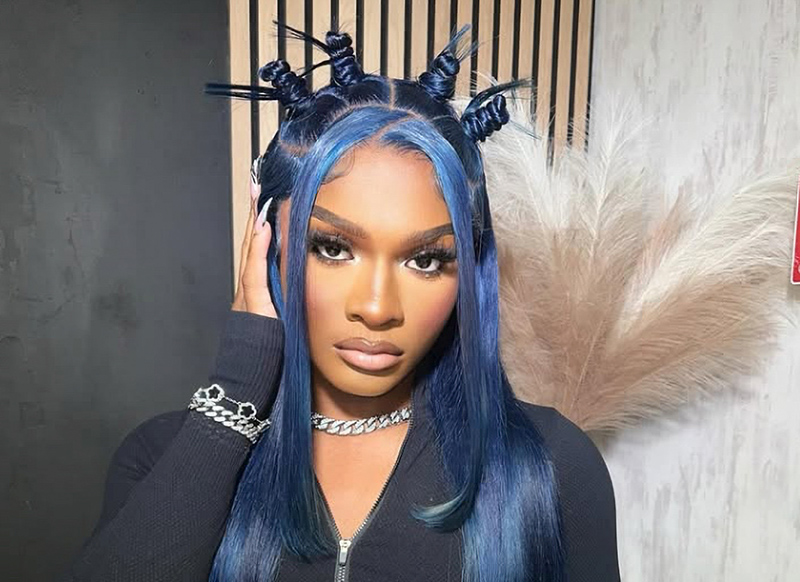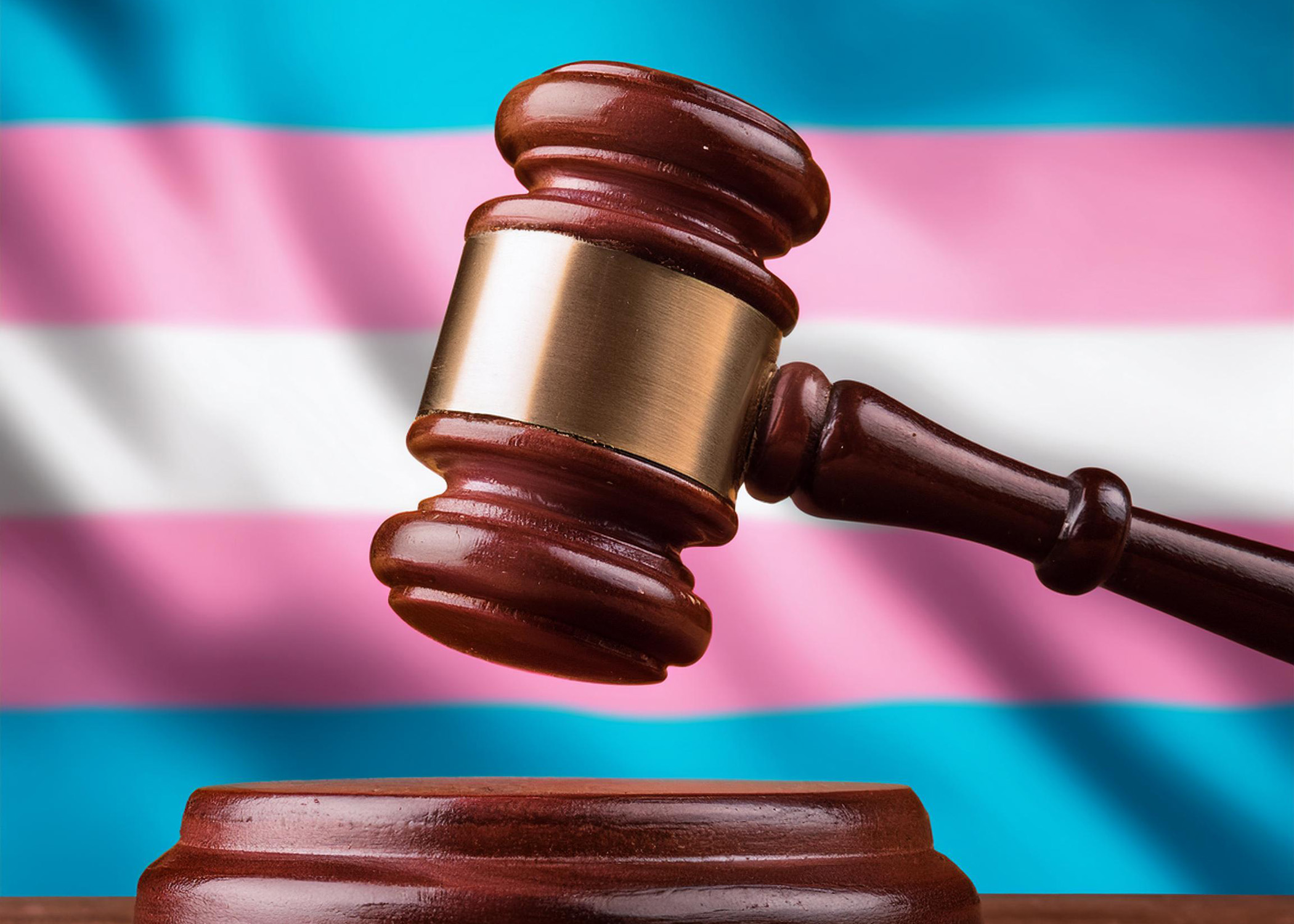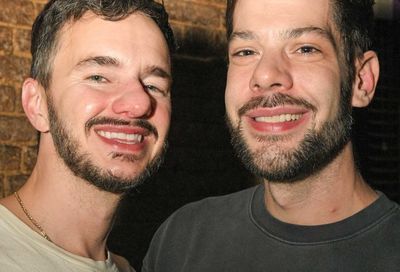Transgender Forward
A timeline of significant moments in the transgender movement
As gays and lesbians celebrate marriage equality across the United States, the transgender members of the LGBT community continue to work diligently to place their civil rights front and center, as we move into the next chapter of LGBT equality.
To many, it seems as if the transgender movement has come from nowhere in the last decade, but the reality is that transgender Americans have been fighting for civil rights along with the lesbian, gay and bisexual members of our community for decades. Here are a few key highlights of transgender people within the tableau of American LGBT civil-rights history:
1800: “Woman Chief” Barcheeampe
A leader of the Crow nation, the “woman chief” was known for her war exploits and had several wives.
1871: We’Wha
Two-spirit Zuni Native American who was born male but lived as a woman. An accomplished weaver and potter, in 1886 the 6-foot Zuni maiden met President Cleveland, who was unaware that she was two-spirit.
1952: Christine Jorgensen
A trailblazer who was the first person in America to receive sexual-reassignment surgery. Jorgensen, a former GI, became a household name and put the issue of gender identity in the American conscience.
1957: Billy Tipton jazz album released
Renowned jazz musician lived his life as a man and “married” several women. He was discovered to be biologically female upon his death.
1965: Dewey’s Coffee Shop Protest
One hundred and fifty “nonconforming” people protested Dewey’s Coffee Shop in Philadelphia because it refused service to young people who were dressing in clothing that did not conform to their gender. The protest led to an end of the discriminatory policy.
1966: Transsexual Phenomenon published
Dr. Harry Benjamin published a seminal work that described the medical transition for transgender people. Benjamin helped Jorgensen in her transition and acknowledged her in the preface of the book: “Without Christine Jorgensen and the unsought publicity of her ‘conversion,’ this book could hardly have been conceived.”
1969: Stonewall Riots
The legendary seminal event of the LGBT civil-rights movement included members of the transgender community. The LGBT community resisted police abuse on the night after Judy Garland’s funeral, which many cite for the frayed nerves.
1970: Street Transvestite Action Revolutionaries (STAR)
Started by transgender legends Sylvia Rivera and Marsha Johnson, STAR was an advocacy group for transgender people. Both Rivera and Johnson were rioters at the Stonewall Inn and helped usher in the tepid acknowledgment of transgender Americans as part of the gay civil-rights movement.
1975: Minneapolis passes transgender legislation
Minneapolis becomes the first city to pass an antidiscrimination law protecting transgender people. That’s right, Minneapolis, in 1975.
1977: Renée Richards
The next transgender icon who pierced the American consciousness. Richards was an eye doctor who became a professional tennis player and challenged a ban that prevented her from playing in the U.S. Open as a woman. The New York Supreme Court overruled the ban, making Richards the catalyst for a landmark decision concerning transgender rights.
1986: FTM newsletter
Lou Sullivan published the FTM newsletter, which was later transformed by Jamison Green into FTM International, the world’s largest information and networking group for female-to-male transgender people and transsexual men. Sullivan is credited with bringing female-to-male transgenderism to the forefront.
1991: Rift with Michigan Womyn’s Music Festival
Nancy Burkholder was removed from the Michigan Womyn’s Music Festival when she was discovered to be transgender. The removal led to an annual protest by the transgender community, which continued through this year, when the festival ceased.
1993: Brandon Teena
Teena, a transgender man, was murdered in Nebraska. The story of his journey and death was later chronicled in the Oscar-winning film Boys Don’t Cry.
1995: GenderPac formed
Transgender activist RiKi Wilchins formed the first advocacy group dedicated to gender identity and expression. The organization ushered in the period in which the national transgender movement took hold.
1999: First Transgender Day of Remembrance
The first Transgender Day of Remembrance honored those who have died due to anti-transgender violence. The commemoration was a direct result of the murder of Rita Hester in Massachusetts.

Transgender Pride flag created
Monica Helms created the transgender flag, saying, “The stripes at the top and bottom are light blue, the traditional color for baby boys. The stripes next to them are pink, the traditional color for baby girls. The stripe in the middle is white, for those who are intersex, transitioning or consider themselves having a neutral or undefined gender. The pattern is such that no matter which way you fly it, it is always correct, signifying us finding correctness in our lives.”
2002: Transgender legal-aid organizations established
The Sylvia Rivera Law Project in New York and the Transgender Law Center in San Francisco were created to advance transgender civil rights using the legal system.
2003: National Center for Transgender Equality established
Activist Mara Keisling, with the support of other transgender activists, founded the organization dedicated to advancing the civil rights of transgender people.
Expansion of San Diego anti-bias law
The San Diego City Council added gender identity to the city’s anti-discrimination ordinance, the Human Dignity Ordinance, with a unanimous 7-0 vote.
2006: California’s Gwen Araujo Justice for Victims Act
AB 1160 passed into law to prohibit the use of so-called “panic strategies” in criminal defenses. The legislation was named in the memory of a transgender teenager from Newark, Calif., who was attacked and killed in 2002. The law proved ineffective when tested during the murder trial for Larry King’s killer.
First transgender person elected to statewide office
Kim Coco Iwamoto was elected to statewide office in Hawaii as a member of the Board of Education.
2008: First transgender mayor in America
Stu Rasmussen became the first openly transgender mayor in America in Silverton, Or. Rasmussen previously had served as the mayor prior to coming out as transgender. He prefers male pronouns but dresses as a woman.

2009: Chaz Bono transition
Child of Sonny and Cher, Chastity Bono transitioned to become a man. He chronicled his transition in a documentary, then went on to become a contestant on Dancing with the Stars, as well as a transgender activist and spokesperson.
2010: First transgender presidential appointees
President Obama appointed the first two transgender people in history. Amanda Simpson was appointed as senior technical adviser in the Commerce Department’s Bureau of Industry and Security, and Dylan Orr was appointed as special assistant to the Department of Labor Assistant Secretary.
First transgender judge in America
Victoria Kolakowski became the first openly transgender judge in America, elected by the voters of Alameda County, Calif., in the Bay Area.
New passport policy
The U.S. State Department announced a new policy eliminating the requirement for surgery to update gender markers on passports.
2011: First NCAA trans athlete
Kye Allums became the first openly transgender athlete to play in the National Collegiate Athletic Association.
California’s Gender Nondiscrimination Act
AB 887 passed into law, expanding the state’s nondiscrimination laws to protect transgender people by including discrimination based on “gender identity and expression” as a type of “gender” discrimination.
New veterans policy
Veterans Health Administration (VHA) established a policy of respectful delivery of healthcare to transgender and intersex veterans.
2012: Matrix director transitions
Lana Wachowski came out as transgender while promoting her movie Cloud Atlas. She is most noted for the “Matrix Trilogy,” created with her brother.
2013: Official debut of “gender dysphoria”
The American Psychiatric Association debuted the term to describe those who deem themselves transgender.

2014: Laverne Cox covers Time
The Orange is the New Black star made headlines as the first transgender person to be featured on the cover of Time magazine.
Women’s colleges open doors
Mills College and Mount Holyoke allowed transgender women to enroll at their female-only institutions.
Gender identity protected in federal employment
The Department of Labor issued a rule banning discrimination based on gender identity in federal employment.
Surgery covered by Medicare
The Obama administration lifted a decades-old ban on using Medicare coverage for gender-reassignment surgery.
2015: Caitlyn Jenner debuts
The former Olympic athlete and reality star came out as transgender, going on to be featured on the cover of Vanity Fair.
First trans national anthem singer
Breanna Sinclairé became the first transgender person to sing the national anthem at a professional sporting event at the Oakland Coliseum before the Oakland A’s game with the San Diego Padres.
Pennsylvania gets transgender physician general
Pennsylvania made U.S. history with the appointment and confirmation of Dr. Rachel Levine as the nation’s first openly transgender state physician general.
White House appointment
President Barack Obama appointed transgender attorney Shannon Price Minter to the President’s Commission on White House Fellowships. Minter was the lead attorney arguing before the California Supreme Court to overturn Proposition 8.
Support Metro Weekly’s Journalism
These are challenging times for news organizations. And yet it’s crucial we stay active and provide vital resources and information to both our local readers and the world. So won’t you please take a moment and consider supporting Metro Weekly with a membership? For as little as $5 a month, you can help ensure Metro Weekly magazine and MetroWeekly.com remain free, viable resources as we provide the best, most diverse, culturally-resonant LGBTQ coverage in both the D.C. region and around the world. Memberships come with exclusive perks and discounts, your own personal digital delivery of each week’s magazine (and an archive), access to our Member's Lounge when it launches this fall, and exclusive members-only items like Metro Weekly Membership Mugs and Tote Bags! Check out all our membership levels here and please join us today!




























You must be logged in to post a comment.